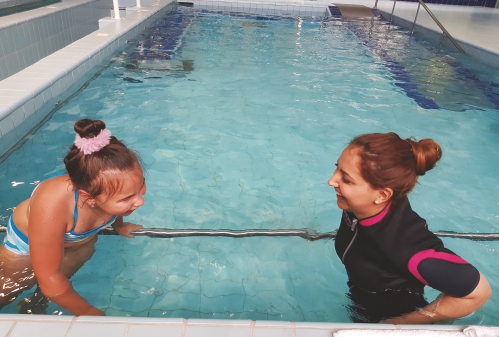Rehabilitation of children with Cerebral palsy

Cerebral palsy is a complex multifactorial disease involving pathological processes in several body systems simultaneously. Disorders of the support and motor function is one of the main and severe symptom complexes of cerebral palsy. There is now a real opportunity to significantly improve the quality of life of the child, even with very serious disorders of motor functions. Comprehensive rehabilitation for cerebral palsy not only helps to develop limited compensatory abilities, but also becomes the key to a successful social adaptation.
The causes
Cerebral palsy is a collective term that unites a large group of progressive movement disorders associated with lesions of the central nervous system. Damage to certain areas of the brain can be intrauterine, formed during childbirth or in early childhood.
There are several factors that can cause this pathological condition:
- maternal diseases (infectious, endocrine, somatic);
- severe toxicosis, gestosis of the second half
- pregnancy;
- Rhesus incompatibility between the mother’s body and the fetus;
- disordered development of the placenta and umbilical cord;
- premature birth;
- physiological birth trauma;
- poor quality obstetric care;
- injuries and infectious lesions of the brain in the first 3 years of the child’s life.
The most common cause of cerebral palsy is premature birth (before 37 weeks of pregnancy). In most cases brain damage occurs even during fetal development, and during childbirth the condition is aggravated. Sometimes the underlying cause of the disease has not yet been established.
Organic damage to the nervous system includes a number of serious symptoms:
- partial or complete paralysis of the limbs;
- disorders of voluntary regulation of arms and legs;
- involuntary, uncoordinated movements;
- inability to stand, sit and walk without support;
- speech disorders;
- epileptic seizures and other convulsive conditions;
- problems of mental development.
Unfortunately, improper care and lack of effective rehabilitation of children with cerebral palsy can lead to a complete loss of opportunities for development. As they grow, complications develop. These include scoliosis, musculoskeletal contractures, deformities and shortening of the limbs, habitual dislocations and subluxations. This reduces the ability of children to self-service and adapt in society.
The most important strategy of the rehabilitation process in cerebral palsy is the system for assessing the body’s motor activity. In other words, the rehabilitation of children with cerebral palsy is directly dependent on the saved (available) movement skills. In this situation, the main tasks are the elimination of pathological reflexes, stimulation
development of motor functions and the formation of the possibility of adequate interaction with the environment.
The neuromuscular correction is based on a combined effect on deep, uncontrolled
consciousness levels. It is aimed at the gradual correction of structural musculoskeletal deformities and restoration of motor functions of the child.
When carrying out rehabilitation, complexes of special exercises and training on
patented rehabilitation simulators. Innovative devices identify “weak links” in the
human body and, based on the data obtained, develop individual training programs.
Classes are held with the active participation of relatives and friends, and can be combined with watching cartoons or children’s content in general.
Rehabilitation methods for cerebral palsy:
- Physiotherapy using classical and modern methods, such as Bobath (Baby-bobat), PNF method, therapeutic exercises, kinesitherapy, kinesio taping, SI method for children, etc.
- Hydrotherapy (therapeutic pool, AQUA-PNF method, hydrotherapy massage with a jet of water, special lift for people with disabilities).
- Ergotherapy using classical methods and modern devices such as Hocoma, Armeo spring, Nirvana, etc.
- Retraining of cognitive functions, social adaptation, learning the skills of everyday life.
- Logotherapy, therapy of swallowing and speech disorders.
- Psychological, neuropsychological and cognitive counseling (extra charge).
- Modern rehabilitation complexes and devices: Lokomat, Armeo, Nirvana, Snoezelen and many other modern devices.
Contact us to send you more information about the available programs!


